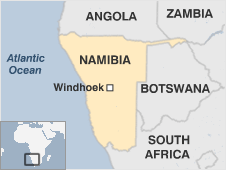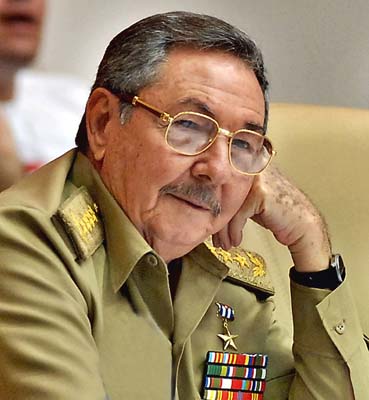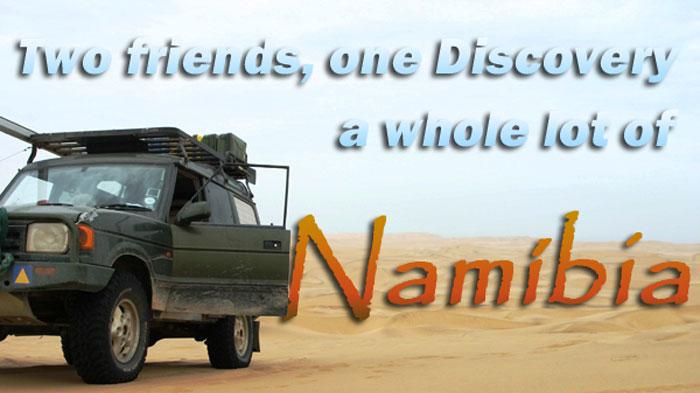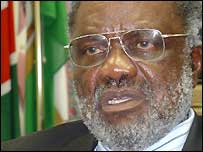.jpg)
Namibia, a large and sparsely populated country on Africa's south-west coast, has enjoyed stability since gaining independence in 1990 after a long struggle against rule by South Africa.
 |
Generic Medicines
Taj Pharma is the largest generic pharmaceutical company in India. We hold top positions in different established markets worldwide generics markets..
.jpg)
Namibia, a large and sparsely populated country on Africa's south-west coast, has enjoyed stability since gaining independence in 1990 after a long struggle against rule by South Africa.
 |
Germany has apologised to Namibia for the colonial-era killings of thousands of members of the Herero ethnic group; their descendants have asked Berlin for financial compensation.
AT-A-GLANCE
 President Raul Castro was due to hold talks with Angolan President Jose Eduardo dos Santos Tuesday on his second visit to the oil-rich southern African nation and longtime Cuba ally in under six months.
|
Namibians achieved independence in 1990 after a bush war of almost 25 years. Inter-racial reconciliation encouraged the country's white people to remain and they still play a major role in farming and other economic sectors.
In recent years supporters of land reform have become more vocal. The expropriation of white-owned farms began in 2005 and the government says it aims to resettle many thousands of landless citizens.
Like its neighbours, Namibia's wellbeing is being threatened by the HIV/Aids epidemic, which is estimated to affect 25% of Namibians. Mr Nujoma made the fight against the disease a national priority.
In the late 1990s secessionist troubles in the Caprivi Strip, in eastern Namibia, prompted thousands to flee to Botswana. In 2002 the government declared that the area was safe for tourists.
Deserts occupy much of the country; their dunes take on shapes and colours according to the elements. The country also boasts game-rich grasslands and a semi-arid Central Plateau, large tracts of which are given over to livestock farming.

President: Hifikepunye Pohamba
Hifikepunye Pohamba, representing the ruling Swapo party, won a landslide victory in presidential elections in November 2004.

Hifikepunye Pohamba, Sam Nujoma's chosen successor
|
Opposition parties disputed the outcome and demanded a recount. Most observers said there had been little evidence of irregularities during voting.
Mr Pohamba, the chosen successor of the former President Sam Nujoma, is a founder member of Swapo and a long-time confidante of Mr Nujoma.
Mr Pohamba, who was inaugurated in March 2005, said he would pursue his mentor's policies, including proposed land reforms. He has warned of a possible "revolution" should white farmers not agree to sell land to the government.
Born in 1935, Hifikepunye Pohamba went into exile in the 1960s and later studied in the Soviet Union.
The president, who shares executive power with the cabinet, is limited to two five-year terms.
Namibia is one of the more media-friendly countries in Africa. The constitution provides for press freedom and on the whole this is respected by the government.
Media rights body Reporters Without Borders says there is "no major obstacle to the circulation of news".
Broadcasters and the private press give coverage to the opposition, including views critical of the government.
There are around 20 private and community radio stations. BBC World, CNN and South African and international TV channels are available via cable and satellite. Radio France Internationale broadcasts on FM in the capital.
There were some 100,000 internet users by March 2008 (ITU figure) - around 5% of the population.
The press
Television
Radio
News agency
AFRICA | ASIA-PACIFIC | AMERICAS | EUROPE | MIDDLEEAST | SOUTHASIA
![]()
![]()
![]()
Mauritania Mauritius Morocco Mozambique Namibia Niger Nigeria Republic-of-congo Rwanda Sao-tome-and-principe Senegal Seychelles Sierra-leone Somalia South-africa Sudan Swaziland Tanzania The-gambia Togo Tunisia Uganda Australia Brunei Burma Cambodia China East-timor Fiji Indonesia Japan Kazakhstan Kiribati Kyrgyzstan Laos Malaysia Marshall-islands Micronesia Mongolia Nauru New-zealand North-korea Palau Papua-new-guinea Samoa Singapore Solomon-islands South-korea Taiwan Tajikistan Thailand The-philippines Tonga Turkmenistan Tuvalu Uzbekistan Vanuatu Vietnam Antigua-and-barbuda Belize Bolivia Brazil Canada Chile Colombia Costa-rica Cuba Dominica Dominican-republic Ecuador El-salvador Grenada Guatemala Guyana Haiti Honduras Jamaica Mexico Nicaragua St-kitts-and-nevis St-lucia Suriname Trinidad-and-tobago Uruguay Venezuela Albania Andorra Armenia Austria Azerbaijan Belarus Belgium Bosnia-hercegovina Bulgaria Croatia Cyprus Czech-republic Denmark Estonia Finland France Georgia Germany Greece Hungary Iceland Ireland Italy Latvia Liechtenstein Lithuania Luxembourg Macedonia Malta Moldova Monaco Montenegro Norway Poland Portugal Russia San-marino Serbia Slovakia Slovenia Spain Sweden Algeria Egypt Iran Iraq Israel-and-palestinian-territories Jordan Kuwait Lebanon Libya Mauritania Oman Saudi-arabia Sudan Syria Tunisia United-arab-emirates Yemen Afghanistan Bangladesh Bhutan India Nepal Pakistan Sri-Lanka The-Maldive